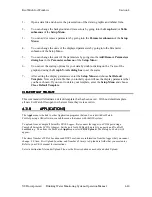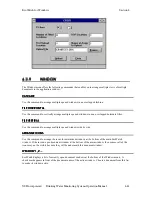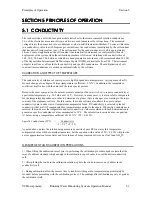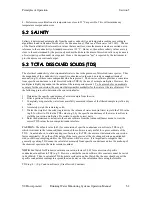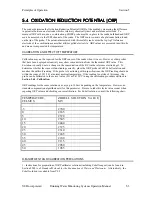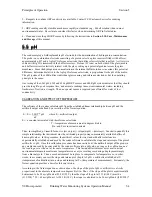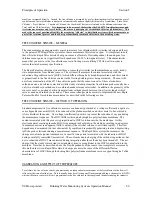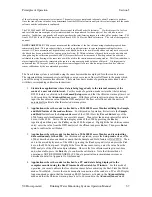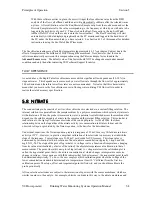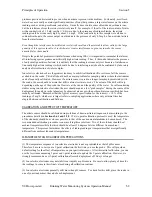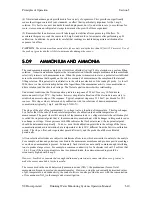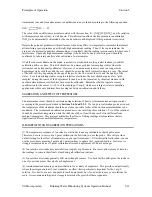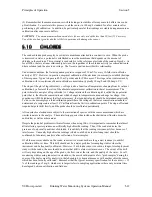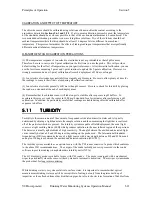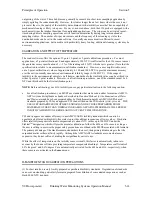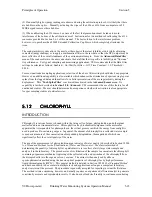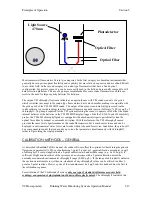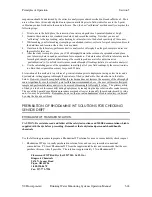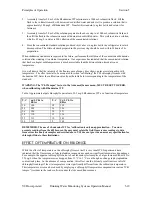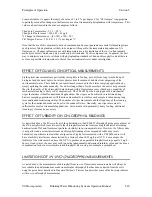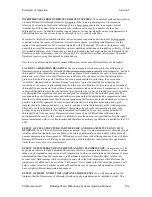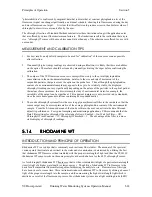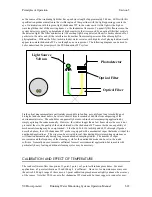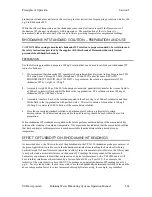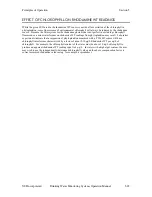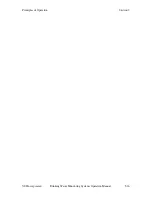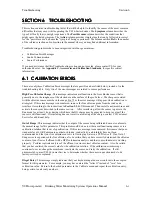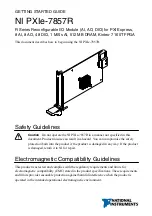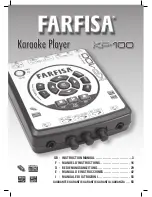
Principles of Operation
Section 5
YSI Incorporated Drinking Water Monitoring Systems Operation Manual
5-12
(5) Remember that the ammonium sensor will take longer to stabilize after exposure to buffers in a sonde
pH calibration. To accelerate this process, soak the sensor in 100 mg/L standard for a few minutes after
performing a pH calibration. In addition, be particularly careful that readings are stable during ammonium
calibration after exposure to buffers.
CAUTION
:
The ammonium membrane module is for use only at depths less than 50 feet (15.2 meters).
Use of the probe at greater depths is likely to permanently damage the sensor.
5.10
5.10
5.10
5.10 CHLORIDE
CHLORIDE
CHLORIDE
CHLORIDE
The sonde chloride probe employs a solid state membrane attached to a conductive wire. When the probe
is immersed in water, a potential is established across the membrane that depends on the amount of
chloride in the medium. This potential is read relative to the reference electrode of the sonde pH probe. As
for all ISEs, there is a linear relationship between the logarithm of the chloride activity (or concentration in
dilute solution) and the observed voltage. The Nernst equation describes this relationship.
Under ideal conditions, the Nernst equation predicts a response of 59 mV for every 10-fold rise in chloride
activity at 25°C. However, in practice, empirical calibration of the electrode is necessary to establish the slope
of the response. Typical slopes are
45-55 mV per decade for YSI sensors. This slope value is determined by
calibration with two solutions of known chloride concentration (typically 10 mg/L and 1000 mg/L Cl
-
).
The slope of the plot of log (chloride) vs. voltage is also a function of temperature, changing from its value at
calibration by a factor of the ratio of the absolute temperatures at calibration to that at measurement. The
point where this new plot of log (chloride) vs. voltage intersects the calibration plot is called the isopotential
point, that is, the chloride concentration at which changes in temperature cause no change in voltage. Our
experience with ISEs indicates that for best accuracy, the isopotential point should be determined empirically.
To do so, the user employs a third calibration point where the voltage of the lower concentration standard is
determined at a temperature at least 10°C different from the first two calibration points. The slope, offset and
isopotential point drift slowly, and the probe should be recalibrated periodically.
All ion selective electrodes are subject to the interaction of species with the sensor membrane, which are
similar in nature to the analyte. These interfering species thus include other halide ions (fluoride, bromide,
and iodide) as well as other anions.
Despite the potential problems with interference when using ISEs, it is important to remember that almost
all interfering species produce an artificially high chloride reading. Thus, if the sonde indicates the
presence of only small quantities of chloride, it is unlikely that the reading is erroneously low because of
interference. Unusually high chloride readings (which could be due to interfering ions) should be
confirmed by laboratory analysis after collection of water samples.
Of all the sensors available on the sonde, ion selective electrodes have the greatest tendency to exhibit
calibration drift over time. This drift should not be a major problem for sampling studies where the
instrument can be frequently calibrated. However, if a chloride sensor is used in a longer-term deployment
study with the sonde, the user should be aware that drift is almost certain to occur. The extent of the drift
will vary depending on the age of the probe, the flow rate at the site, and the quality of the water. For all
monitoring studies using ion selective electrodes, the user should acquire a few “grab samples” during the
course of the deployment for analysis in the laboratory by chemical means or with another chloride sensor
which has been recently calibrated. Remember that the typical accuracy specification for the sensor (+/- 15
% of the reading or 5 mg/L, whichever is larger) refers to sampling applications where only minimal time
has elapsed between calibration and field use.

